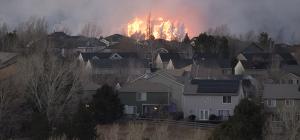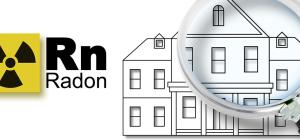
Preventing indoor overheating

As climate change leads to more frequent and severe heat waves and more very hot days in Canada and elsewhere, there is an increased risk of indoor overheating. Indoor overheating refers to the excessive build-up of heat inside a building. For occupants, this can lead to discomfort, lost productivity, exacerbation of health conditions, heat injury, hospitalization, and even death. Those most susceptible to indoor overheating include seniors, people who are socially isolated or who live alone, and people with disabilities and certain chronic conditions. Most building standards are based on past climatic conditions and are not suitable for current extreme heat events and hotter future climates. While high outdoor temperatures are the primary cause of indoor overheating, the design, operation, and maintenance of buildings can exacerbate overheating risk through a variety of mechanisms, including:
- Unshaded window exteriors and large window areas. These building features allow for higher solar heat gains, especially on the south, east and west walls, and through skylights.
- High insulation levels and airtight building envelopes. Buildings with these features reduce heat gains from the outdoor environment but also slow the transfer of trapped indoor heat to the outdoors. If the indoor space is not well-ventilated, the trapped heat can increase the risk of overheating.
- Internal heat gains. Operating home appliances or other equipment, and multiple human and animal occupants can all increase temperatures within the building. Uninsulated hot water pipes can also add to indoor heat build-up.
- Floor and room location. The top floors of multi-unit residential buildings tend to have higher indoor temperatures than lower floors, especially if the roof or attic are not insulated or cool (heat reflective) roof material is not used. Rooms on the south and west side also tend to have more solar heat gain in the warm seasons.
- Building and window orientation. North-south orientation exposes a building to more solar heat gain, compared with east-west orientation.
- Poor natural ventilation. Lack of good cross ventilation by prevailing breezes, especially at night, reduces the potential for cooling through open windows.
- Lack of mechanical air conditioning (AC). Buildings without an air conditioning system can overheat in warm weather. Ceiling and other fans can help reduce some thermal discomfort. Window and portable air conditioners can only cool small spaces.
There are effective design and retrofit strategies to reduce indoor overheating risk. While installing central AC (or a portable window AC for smaller spaces) is a highly effective strategy to reduce heat-related mortality and morbidity, AC is not a perfect solution. Many at-risk households cannot afford to install, operate, or repair AC systems. AC also contributes to greenhouse gas emissions, contributes heat to the outdoor environment, and strains power supplies during extreme heat events. Sole reliance on AC as a cooling strategy can lead to mass casualties in the case of power outages. Therefore, various passive approaches must also be prioritized in the design or retrofit of buildings and strategies should be combined to ensure thermal safety and comfort today and under the more extreme climates buildings will face in the coming decades.
The resources listed below are intended to help environmental public health professionals improve their understanding of infrastructural and behavioural risk factors that contribute to indoor overheating in Canada and the strategies that can mitigate these risks. Policy considerations to protect against indoor overheating are also outlined. For more information, please see our Extreme Heat subject guide here.
Understanding infrastructural and behavioural risk factors that contribute to indoor overheating
- Home forward indoor temperature assessment (City of Portland Bureau of Emergency Management, 2023)
This report summarizes the findings of a study conducted for the City of Portland and Multnomah County to track summer temperatures inside affordable housing units and improve understanding of how unit characteristics and resident behaviours and attitudes affect indoor overheating.
- Climate resilience buildings: guideline for management of overheating risk in residential buildings (National Research Council Canada, 2022)
This report provides a general framework to evaluate overheating risk in buildings (chapters 6-9), identifies potential mitigation strategies to reduce overheating risk (chapter 10), and presents the application of the framework to three types of buildings: detached homes, attached homes, and multi-unit residential buildings (chapters 11-13).
- How to retrofit buildings in a climate emergency: Stepwise EnerPHit (The Passive House Network, 2021)
This webinar provides an overview of Stepwise EnerPHit, a tool to help building owners understand climate risks to buildings and plan retrofits that are adapted and resilient to a changing climate.
- Passive survivability of buildings under changing climates across eight US cities (Baniassadi et al., 2019)
This article uses building energy simulations compliant with two energy codes (2003 and 2018) to compare indoor overheating in residential buildings without air conditioning at the start and middle of the century and demonstrate how passive survivability of residential building stock is evolving.
Design standards, guidelines, and strategies to reduce indoor overheating
- Keeping our cool: Preventing overheated buildings in the climate crisis (NCCEH, 2023)
This webinar provides an overview of indoor overheating in Canada in the face of climate change. Design guidelines and standards to limit overheating in buildings are covered, alongside examples of how to achieve “climate ready” buildings cost effectively in new and existing buildings.
- Space cooling strategies (BC Housing, 2022)
This one-pager outlines no-cost or low-cost cooling strategies for residential buildings, as well as the pros and cons of various mechanical cooling strategies such as portable air conditions, personal fans, mini heat pumps and central air conditioning.
- Overheating risk tool for retrofit (Good Homes Alliance, 2022)
This easy to use tool for non-specialists was developed for building energy and decarbonization groups in the UK. It is intended for use at the early stages of residential retrofit projects, or on existing homes, to identify key factors contributing to overheating risk and possible mitigation measures. A tool is also available for new homes.
- Irreversible extreme heat: Protecting Canadians and communities from a lethal future (Intact Centre on Climate Adaptation, 2022)
This guide presents a series of actions individuals, property owners and managers, and communities can take to mitigate the risks of indoor overheating. Actions are divided into three categories: 1) planning and behavioural changes, 2) working with nature, and 3) improving buildings and public infrastructure.
- Study of adjustable exterior solar shading options for multi-unit residential projects (Public Architecture, 2022)
This report provides a summary of adjustable exterior shading devices for residential windows currently on the market, including information on product cost, installation complexity, and range of shading provided, among other factors.
- Resilient cooling strategies – A critical review and qualitative assessment (Zhang et al., 2021)
This article provides a critical overview of traditional and novel building cooling strategies and how they hold up under heat waves and power outages. The authors suggest that a combination of cooling strategies with different functions is important to achieving thermal resilience.
- Designing climate resilient multifamily buildings (RDH, 2020)
This report presents modeling results on the effectiveness and cost of preventing overheating in new and existing multifamily buildings in BC under a mid-century climate, based of the Energy Step Code overheating targets. The authors recommend several actions for better cooling strategies, overheating assessments, and building codes.
- Design guide supplement on overheating and air quality (BC Housing, 2019)
This design guide supplement provides information on the key strategies and approaches required to minimize the impacts of climate change on indoor overheating and air quality in mid- and high-rise residential buildings in British Columbia. The resource complements the BC Energy Step Code Design Guide.
- Guidelines for effective residential solar shading devices (National Research Council Canada, 2010)
This report presents a set of guidelines for the effective use of solar shading devices on residential windows in Canada, including information on how different types of shading devices affect the thermal comfort of occupants.
Policy considerations to protect against indoor overheating
- Heat-proofing community housing: Prioritizing extreme heat adaptation for vulnerable Canadians (Action Canada, 2023)
This report explores how policymakers can better protect community housing residents in urban areas, including establishing a maximum indoor temperature and modernizing Canada’s building codes to ensure community housing is climate resilient.
- Policy tools to create and support cooler, safer indoor living spaces (Vancouver Coastal Health, 2023)
This report summarizes the results from a review of policy and regulatory options that could increase thermal safety in homes. While this was developed with the Vancouver Coastal Health region in mind, there is broad applicability of these policy and regulatory options to other regions across Canada.
- Towards establishing evidence-based guidelines on maximum indoor temperatures during hot weather in temperate continental climates (Kenny et al., 2017)
This review examines the relationship between indoor temperatures and human health, revealing a high degree of variability in what can be considered an acceptable indoor temperature. This was largely due to differences in how groups respond physiologically and behaviourally. When defining an indoor temperature threshold, the authors recommend both physiological and non-physiological factors (e.g., building design, location) be considered.
- Municipalities accelerating deep retrofits: Resources for local governments (Pembina Institute, nd)
This website outlines the policy mechanisms that Canadian municipalities can use to help drive demand for and supply of building retrofits, including links to resources they developed to achieve this.
The NCCEH would like to acknowledge Tom Phillips, Healthy Building Research, for helping to collate resources and reviewing this subject guide.








